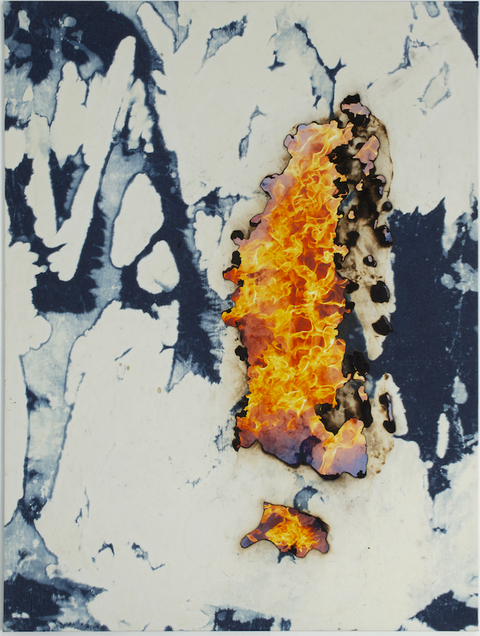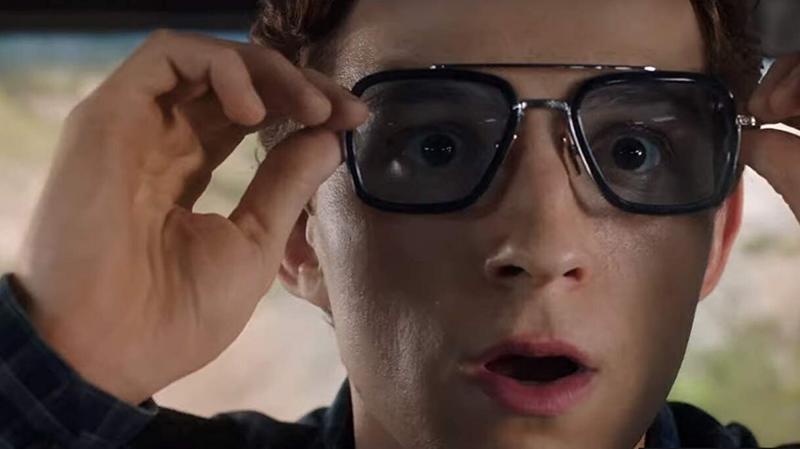The Art of Making Common Salt as Now Practised in Most Parts of the World
As a general rule, nostalgia in fine art is bad. It's a gimmick that makes people like your fine art more than they should, because information technology'southward familiar, and it is never seriously critical. Nostalgia is an intellectual and aesthetic crutch that prevents cultural artifacts from reflecting their ain epochs.
Only at that place's a contempo tendency beingness made and shown that I support, and it's not just because of my weakness for Seinfeld and Vaporwave music. Information technology's a whole host of new art that uses the aesthetics of '90s graphic blueprint to get beautiful and new.
Yous know what I hateful considering you lot've noticed this yourself: It's in the denim of Korakrit Arunanondchai'southward work, for instance, and in the Lisa Frank-esque neons of Alex Da Corte and the later work of Peter Saul. It'south also in Sam McKinniss's portraits of Prince and Michelle Pfeiffer's Catwoman, and in Kerstin Brätsch'southward gradient-heavy loops, reminiscent of a broken Magic Eye repeating itself in the wrong way. All of it is wholly deep-fried in that decade.
Take Laura Owens'due south untitled top-floor installation at the Whitney Museum of American Art in New York, which closed in February. Those giant notebook pages embossed with graphics and scented markers build to a apprehensive, Expressionist still life in the corner, retaining the garish Zack Morris palette. That slice happened to be a recreation of her young son'southward notebook, simply there'southward a childlike quality to all such art.
Ruth Root makes her own spandex with children'south pajama-like designs and wraps it around canvas, and Christina Quarles sneaks such colors and graphic-design elements into her otherwise dark scenes of body dysmorphia. Quarles is immature, and most of the people creating this kind of art today were children in the '90s, which helps inspire the feeling of play.
So is it nostalgia? This new wave feels dissimilar than the usual civilisation mining that goes on 20 to 30 years after a decade has ended, the way the cool people of the 2040s will probably try to mimic our tragic current era. For 1 thing, it'southward and then widespread. For another, the 1990s didn't have as cohesive a look every bit the '70s and '80s did. Instead of Halston bias cuts and bell-bottoms, the outfits ranged from grunge to Hackers to dorky dad. And, similar the Rachel haircut, all of information technology has aged terribly. (Nineties-inspired looks have been appearing on the runways for some time now.)
"Since the beginning of her career in the mid-'90s, Laura Owens has been actively challenging our assumptions nigh what counts as beautiful or ugly in art—and beyond," says Scott Rothkopf, who curated Owens's prove at the Whitney. "Her attack on the conventions of expert taste is why many of her paintings don't settle into chic interior decor. But for me, this is function of their foreign and lasting power."
The ugliness adds something hither, a certain liberation. Perhaps that's one of the reasons the raver colors of the era have been associated with the new psychedelia: Information technology'southward transgressive to borrow aesthetic elements of our contempo past that many would rather forget. Some people I overheard at the Whitney sounded like they thought the goal of the museum, in hosting the Owens survey, was the same equally the Nazis' in the Degenerate Art Exhibition of 1937. I'm non sure that tracks.
What does it all mean? This is good art, and then you tin't actually generalize about information technology. Information technology all says something unique virtually itself, about the looks information technology's borrowing, and most our current era. Only for the portion of information technology that'south been fabricated in the past couple of years, I do have a question: Might this tendency have something to exercise with the fact that we've had to stare at 2 '90s characters, Hillary Clinton and Donald Trump, for the last three years?
The '90s, afterwards all, were the last time we thought of society as something that would continue getting better and better. The end of the decade was about the end of optimism itself, considering later that came 9/11, and we're still living out the reality that followed.
If artists are returning to the '90s, it may be that they doubtable, like the rest of u.s., that things take gone downhill culturally e'er since. There'due south clearly some hope here. It's thin, and information technology's fragile. And for some, it'south 24-hour interval-Glo—just it works.
This content is created and maintained by a third party, and imported onto this folio to help users provide their email addresses. You may exist able to detect more information most this and similar content at piano.io
dominguezwhentely.blogspot.com
Source: https://www.elledecor.com/life-culture/a22854694/nostalgia-in-art-world/








Post a Comment for "The Art of Making Common Salt as Now Practised in Most Parts of the World"